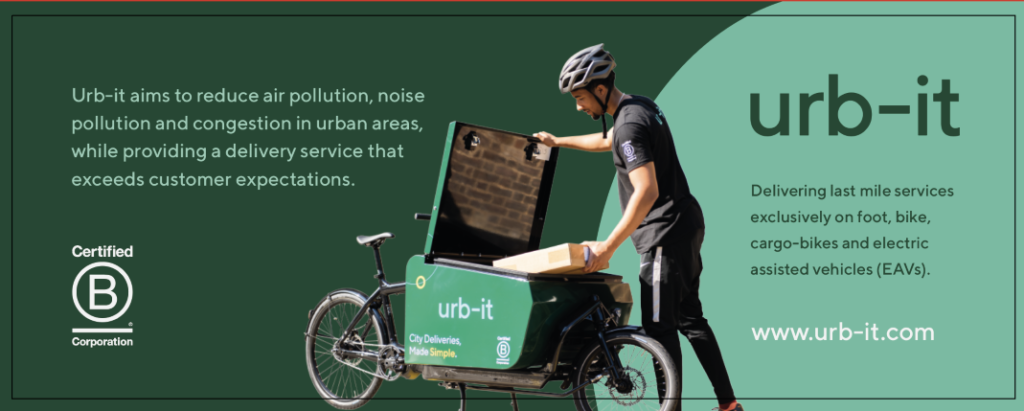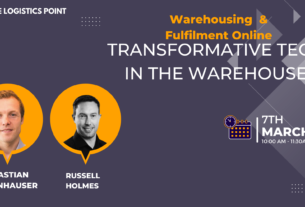The logistics market is transforming and on-demand services are only expected to grow. On-demand has a couple of unique characteristics and we spoke to Justin Blackhurst, Co-Founder of Delivery App, an on-demand logistics provider.

How has on-demand logistics changed over the last few years and what was the effect of Covid?
On-demand logistics is undoubtedly one of the most exciting areas of innovation in the logistics industry and one which presents a major opportunity which isn’t just reserved for the major players with capital available to invest into the infrastructure.
Customers have started to use technology to book their couriers. Traditionally people would pick up the phone to their local courier supplier to book a job. Now they’re visiting websites and turning to apps.
That’s made it hard for smaller operators to market and pick up jobs as the need to invest into new technology and infrastructure has become a barrier.
Now Apps such as DeliveryApp are opening up this marketplace to small independent couriers creating an even playing ground as they can register their fleet and generate new jobs without having to invest into expensive tech and marketing to meet their customer requirements surrounding information, payment and fulfilment.

For freelance drivers, on-demand apps are making life simpler. More time can be spent on the road completing deliveries and generating revenue, instead of having to market for new business or conduct admin for those jobs completed.
And for businesses, it’s helping to meet customer demands without having to invest into fleets or invest large amounts of time to find available couriers.
These are all particularly important as a response to the pandemic. The logistics industry has experienced exponential growth as businesses have had to pivot operations to meet demand. That demand has created a need for slicker, integrated, solutions which can deliver quality customer experience like those businesses which have been operating online to your door solutions for years, and as a result, on-demand apps such as DeliveryApp are gaining more traction as they integrate into SMEs seamlessly.
What we’re also seeing drive the category is some final mile delivery solutions trying to capitalise on the lack of delivery capacity from big supermarkets for grocery deliveries. With stores re-opening and people making their way back out for grocery shopping, we expect this to plateau and drop off in the New Year once we move through the winter and hopefully make our way out of the pandemic.
How is on-demand logistics different to traditional models and do you expect it to grow in the future?
If you think about the traditional cycle to getting a job fulfilled, on-demand services such as DeliveryApp simplify that process. Where you may have had to call three local couriers to find one with an available driver and get the best price, now you’re just posting your job to one platform, and you know it’ll then quickly be seen by couriers in the area with capacity to fulfil it. So instantly the end user has saved time.
There’s also shared cost savings thanks to reduced overheads. Once a platform has been created, whether it handles five jobs or five hundred jobs, the need to scale administrative resource isn’t the same as traditional models so the customer saves on money as well as time.
Finally, there’s the constant stream of data. Dialogue between the platform and the customer keeps the user informed and provides peace of mind that their delivery is on its way. Previously customers would be calling depots to chase up estimated collection and delivery times, in-turn increasing the amount of time needed to fulfil a job. With on-demand services, that’s removed.
The opportunity comes from the way the technology can be integrated and this is where the industry will continue to see growth over the coming years. APIs integrating with existing ecommerce sites will create smooth customer experiences. This will give small businesses the chance to compete on a bigger scale without having to invest in technology or logistics infrastructure.
And whilst on-demand logistics is something we’ve been talking about within the industry for some time, users are now starting to see the benefits of adopting the technology and moving away from calling round their usual providers. As such, consumer confidence is now starting to really grow and this will be an upward trend as it turns to adopted behaviour.
What goods are most commonly transported?
Like a traditional courier, our customer base ranges from individuals moving furniture and bulky items to other courier companies using us as overspill when they’re struggling to fulfil jobs.
We do a lot of work in print, with packaging being one of our most moved items. We also move a lot of wholesale goods – recently eScooters have seen a boom in demand and as businesses prepare for Christmas, they’ve clearly been building up inventory.
We also move a lot of bespoke engineered items and large parts. We’re also seeing increased demand coming from customers who would usually
What is DeliveryApp’s model and how has technology enabled it?
DeliveryApp’s tech-platform creates the infrastructure of a traditional large-scale national courier provider.
Where a firm may have localised infrastructure with branches around the country connecting customers to their driver networks, DeliveryApp’s technology creates this vast network of independent couriers without the requirement for expensive assets.
As a result of this tech-based solution, it drives down the cost for the customer whilst also ensuring our drivers are being paid fairly. Unlike bidding platforms, this isn’t an unsustainable race to the bottom, it has the transparency our customers and drivers love which is why our network of users (both customers and drivers) is growing at a rapid pace.
We continue to invest heavily into our platform software in-order to bring new products to market in order to meet new customer demands. Most recently this has seen new card-less payment functionality being introduced but will include integration of multi-drop and green delivery as our platform evolves.
Our focus is always on making this functionality easily accessible to everyone, as such, all anything will ever need is a smartphone or web browser in order to be a user. ✷



